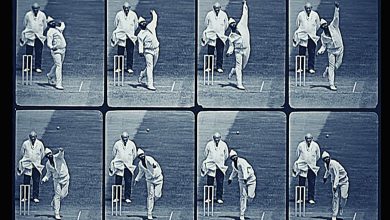Jaiswal a night away from being India’s new No.3 in first Test vs WI

In his short domestic career so far, apart from showing his mettle with the bat, Yashasvi Jaiswal knows the value of making opportunities count.He has gone through extraordinary hardships of selling pani puri outside Wankhede Stadium to staying in a tent in the maidans while braving the monsoon and humidity of Mumbai, yet managing the time to learn and play the game he loves the most.Few stories sound as inspiring as Jaiswal’s, and he is now just one night away from living the moment he has dreamt all along. Barring any last-minute changes, the 21-year-old will make his Test debut at Windsor Park stadium in Roseau, Dominica, as India officially enters a transition period in red-ball cricket beginning with two matches against the West Indies.
It has not even been a year since Jaiswal came on the national radar. A compact left-handed opener, who hits the cricket ball long and hard, he was one of the players who caught the global eye at the Under-19 World Cup in 2020, where India ended as runners-up.
Under-19 prodigies, especially batsmen, making the national cut soon after isn’t new here. It is the turn of Jaiswal and one whose arrival signals a definite change of direction in Indian cricket. India tends to identify their No.4 well ahead of time so that they keep grooming the player in other positions before handing it to them.
One knew Virat Kohli was going to be the No.4 when he burst onto the scene, just like Shubman Gill has been earmarked for the position. The No.3 is, however, has been carefully plucked out of domestic fields. There was Rahul Dravid and then Cheteshwar Pujara. And now everything points to the fact that it would be Jaiswal at No.3 for the foreseeable future, unless India throws up a surprise.
A left-hander at No.3 in itself has been a long time coming for India. Since the late Ajit Wadekar batted in that position in 59 innings, not a single southpaw has lasted even half that long. Sourav Ganguly did it on 18 occasions and Vinod Kambli on 16 instances. Even in the case of Jaiswal, originally an opener, India have been forced to try him at No.3 because it is the only position considered open and the word among selectors and team management is that there are way too many options to bat at the top.
Rajasthan Royals’ Yashasvi Jaiswal celebrates after their win in the Indian Premier League cricket match against Kolkata Knight Riders in Kolkata, India, Thursday, May 11, 2023. (AP Photo)
And cricketing wise too, there is a thought that having a left-hander, who is solid and compact at No.3, will break the monotony.
“Be it technically and from the mental side, he is ready and raring to go,” Amol Muzumdar, who coached Jaiswal at Rajasthan Royals and Mumbai, told The Indian Express. “I always feel it is better when a batsman is little undercooked than overcooked when he makes the international cut. Because when you graduate to the top level, if you are undercooked or raw, you end up learning over a period of time and observe small things that matter. It is always effective to learn the trade while playing at the highest level rather than spending a lot of time in domestic cricket,” he said.
Fit for the big step up
Muzumdar believes Jaiswal has got the call-up at the right time because he has experienced the highs and lows of the game and is in good form. Having seen him struggle a bit in the long format as there was no red-ball cricket during the 2020/21 season that followed the U-19 World Cup that Jaiswal was part of, Muzumdar didn’t start him in the Ranji Trophy group stages in 2022. Only after a decent run of form during the Indian Premier League, Muzumdar “strategically gambled” with his inclusion in the XI for the knockout stages that were held in June.
Jaiswal would start with a second innings century in the quarter-final against Uttarakhand, before scoring two in the semi-final against Uttar Pradesh. Those three centuries would put him in the West Zone squad for the Duleep Trophy, where he would score 265 in the final against South, and in the Irani Cup, score a century in each innings, that included a 213 in the first.
“There has been a steady growth from his Under-19 days. He was earmarked as one for the future, and was bought the Rajasthan Royals who saw him as one to invest in. They spent a lot of time and energy grooming him. And at the same time, the returns were higher. RR knew this was a player who is going to play regularly in the next couple of years for them and it happened this season. In the last three years at RR and Mumbai, it has been a steady progress for him. He has matured every season. He had a bit of an issue with the red ball initially. He had to tighten up on the off-side especially. When he wanted to leave the ball, he had to do it a lot earlier than he was doing back then and worked on that. But the Ranji Trophy knockouts held after the IPL were a catalyst for him,” Muzumdar said.
Attacking mindset
Apart from filling the shoes of Pujara, a player who was tailor-made for the No.3 spot, Jaiswal’s style of play – a lot more aggressive – will also bring a change of approach. It is something India isn’t used to, having had two solid walls since the late 20th century. If anything, Jaiswal is a lot more daring in terms of playing textbook shots – he got off the mark with a pull that went for a six in the Duleep Trophy quarter-final last year and Muzumdar believes he would be handy at No.3 for the time to come.
“He has all the ingredients. I hope people don’t bring Dravid’s or Pujara’s numbers to him. He has to be given the long rope to embrace the challenge that international cricket throws up and when you go through the tide, you become better,” Muzumdar said.
Since Ajinkya Rahane and Rohit Sharma, three from the Mumbai school of batting haven’t been able to sustain the tide in Test cricket. Prithvi Shaw, Shreyas Iyer and Surykumar Yadav have been found wanting in red-ball cricket with glaring technical issues, but Muzumdar believes Jaiswal can change that. “It is about how badly you want to play Tests for India. He is very much from the Mumbai school of batting. When the ball is there for a cover drive, you have to play. Mumbai batsmanship is all about treating the ball on merit. It is not just about batting long, it is a myth. Sandeep Patil, Ravi Shastri played shots. There was no one more aggressive than Sachin Tendulkar.”







